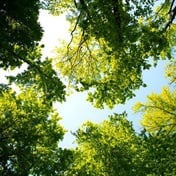Amid the highest recorded pollen counts in history, Health24 will be bringing you exclusive pollen count updates courtesy of the UCT Lung Institute's Allergy and Immunology Unit.
Here are the major city updates for 29 May:
Cape Town (Western Cape)
Grass levels were low, tree (gum and pine) were very low and the low weed levels contained only goosefoot. All moulds were low during the sampling period but small spikes were detected for Cladosporium.
Count: 3 (low)
Johannesburg (Gauteng)
Grass levels were low to moderate. Trees levels were very low and only birch, bush willow and gum were detected. Weed pollen levels were also low and protea, English Plantain, goosefoot, the daisy family, sorrel and fern spores were detected. Mould levels were low,
Count: 14 (moderate)
Pretoria (Gauteng)
No data available due to the Covid-19 crisis.
Bloemfontein (Orange Free State)
No data available due to the Covid-19 crisis.
Kimberley (Northern Cape)
All pollen and mould levels decreased abruptly during this dry late autumn-early winter period. Grasses were low, tree pollen was very low as only Rhus/Searsia was detected. Weed pollen was also low and only Euphorbia and Rumex (sorrel) pollen was observed.
Count: 2 (very low)
Durban (KZN)
Grasses were at low levels, and only low levels of eucalyptus pollen was detected. Weed pollens were low but more varied and the weed types: ragweed, the daisy family, goosefoot, waxberry and fern spores were identified. Moulds were low with small spikes for ascospores and basidiospores (mushrooms).
Count: 6 (moderate)
Port Elizabeth (Eastern Cape)
Grass levels were low. Trees ranged from low to high with Rhus/Searsia concentrations that exceeded the significant threshold on one day and were a detected in the air throughout the week. No weed pollen was detected and moulds were low but with small spikes for basidiospores (this group includes mushrooms).
Count: 8 (moderate)
See the full report HERE.
Reference ranges:
Overall, Trees, Grasses and Weeds all use the same values (grains per cubic metres of air).
Overall count is the daily average of pollen grains per cubic metres of air (trees plus grasses plus weeds).
In partnership with the UCT Lung Institute's Allergy and Immunology Unit.
As the pollen problem worsens, precise and expanded monitoring becomes even more essential. And here's how you can help.
* Please note weekly pollen counts will be disrupted during the national lockdown and will intermittently be made available. We apologise for the inconvenience.
WATCH | Is it the flu, allergies or the new coronavirus? Here’s how to tell the difference
WATCH | Can being 'too clean' cause allergies?
WATCH | Behind the scenes: How spore traps in SA are used to determine the pollen count
Image: Getty




 Publications
Publications
 Partners
Partners















